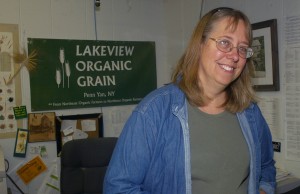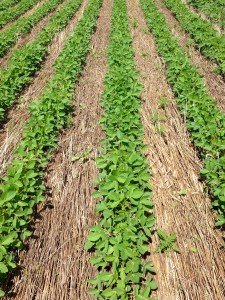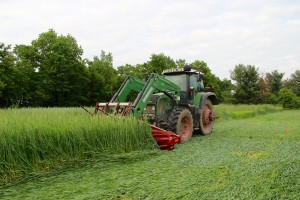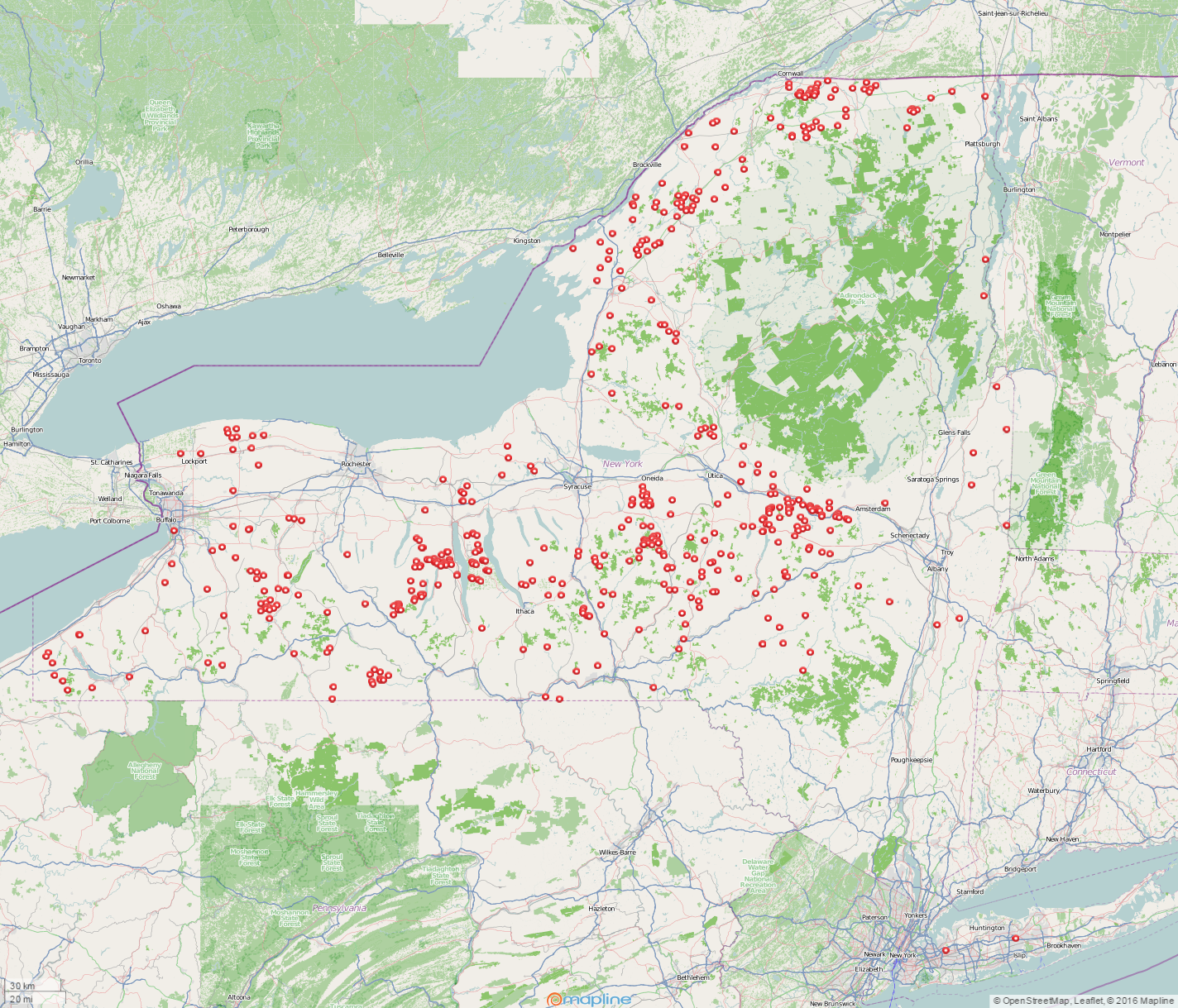Geneva, NY. New and changing global markets for organic grain and dairy producers, flax grain production and uses, and a session entitled What Do You Want to Make Per Acre on Your Farm are all on the agenda of the March 8 and final New York Certified Organic Winter Meeting for 2016. The meeting begins at 10 am in Jordan Hall, 630 West North Street, at the New York State Agricultural Experimental Station in Geneva, NY.
One of the featured presenters at the NYCO meeting is Bob Quinn of Big Sandy, Montana, talking about developing new markets for organic grain. Quinn considered several options before settling on the ancient grain of kamut as a good fit for his 2,400-acre organic farm in an area that can receive 13 inches of rain in one season. He will talk about the importance of research, dedication to establishing a strong market, and what farmers can do to develop their own niche.
Mary-Howell Martens, who operates Lakeview Organic Grain and co-owns an organic grain farm with her husband Klaas Martens in Penn Yan, NY, will cover changes in the world grain market. The Martens are highly respected agricultural innovators who willingly share their knowledge to encourage other farmers to be successful. New York Organic Certified started in their farmhouse kitchen 21 years ago and grew into the Jordan Hall auditorium to accommodate increasing attendance.
Luke Gianforte of Gianforte Farm, Cazenovia, NY, will help audience members answer the question of what each wants to make per acre with their farming enterprise. He will share how he tracks costs and returns for 500 acres of up to 10 different organic grains and row crops he and his dad grow in any given year. The Ginafortes also operate their own small mill and package whole and milled grains in bulk and for restaurant, retail and farmers’ market sale, largely serving the Central NY and Mohawk Valley regions.
Ed Schefler of Groton, NY, will be among the growers on the after-lunch panel discussing alternative grains production. Schefler will show slides about growing flax and pressing the seed for oil and cake, which he feeds to his cows.
New York Crop Insurance Education Team and Cornell Cooperative Extension provided support for the 2016 NYCO meetings. There will be a brief description of how crop insurance can benefit organic farmers at the March 8 meeting.
There is no cost or need to register to attend the program. Participants are asked to bring a dish to pass at the potluck lunch. For more information, contact Fay Benson at 607.745.3807, afb3@cornell.edu
Mary-Howell Martens is one of the featured speakers at the March 8 New York Organic Certified meeting in Geneva, NY. The meeting is free to attend and begins at 10 am. Photo: Spencer Tulis




